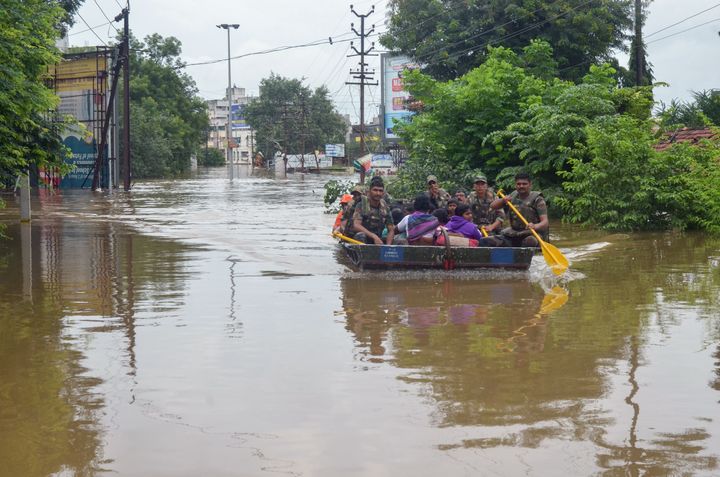
NEW DELHI—The Devendra Fadnavis-led Maharashtra government should have handed over relief and rescue work relating to the flood affected people to the Indian Army as the National Disaster Response Force teams were inadequate in number considering the extent of flooding, said Leader of Opposition in the state assembly and Congress MLA Vijay Wadettiwar on Friday.
“It doesn’t look like the situation is in the administration’s control,” claimed Wadettiwar over the phone while speaking with HuffPost India. “Teams of the National Disaster Response Force are working but seem inadequate. Given the wide extent of flooding, the Army should have been called in to lead the relief and rescue operations. This could have reduced damage.”
Three districts of Maharashtra —Kolhapur, Satara and Sangli—have been affected by floods. Reports suggest Kolhapur is the worst affected as the city and villages around it continue to be submerged under water. Wadettiwar spoke with HuffPost India while he was touring Kolhapur and Satara districts on Friday.
“People are still stuck in the villages. Just one village near Kolhapur had 2000 residents stranded. There is a shortage of boats despite supplies arranged by the NDRF as well as those privately arranged for by people themselves. The damage is big enough for this to be declared a national calamity,” said Wadettiwar.
“The damage is big enough for this to be declared a national calamity”
- Vijay Wadettiwar, Leader of Opposition, Maharashtra Assembly
The Vidarbha MLA said, while he was travelling in the two districts, he heard from people that at least a 100 people may be dead and the state government was underreporting the actual numbers.
This claim could not be independently ascertained. The NDRF’s Maharashtra battalion could not be reached for a response. The Maharashtra government has said 27 people died due to flooding.
Drawing from his visit to the near most accessible village to the Kolhapur city, Wadettiwar claimed, “I could visit till Shiroli village, which was about 11 km Kolhapur. Water with a depth of more than 5 feet could be seen on the highway leading to Kolhapur. Rains are continuing and it is unclear when they will stop. Villages are submerged under water.”
Maharashtra Chief Minister Devendra Fadnavis is reported to have blamed excess rainfall for the unusually severe flooding in Kolhapur. “From June to August, Kolhapur has received more than 104% of normal rainfall,” he said.
But the Leader of Opposition Wadettiwar blamed “apathy” in the state administration for its “failure” to remain alert to the possibility of flooding. He also said the promised discharge of 5 lakh cusecs water from Karnataka’s Almatti dam to tame floods in Kolhapur did not seem to have happened when he visited the region, either. “Had that been done, flood waters would have receded. Instead, I saw that water in Satara appeared to be growing,” he said.